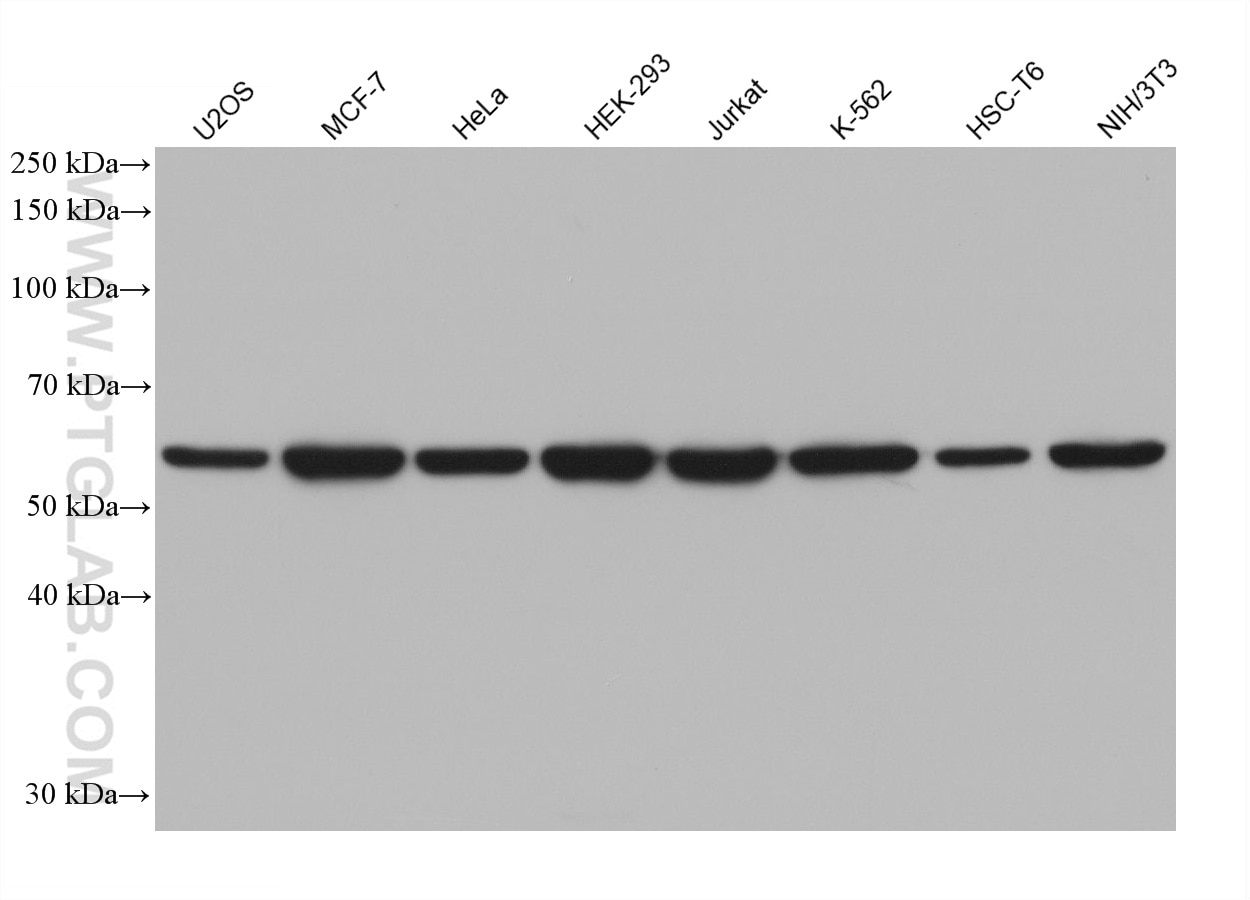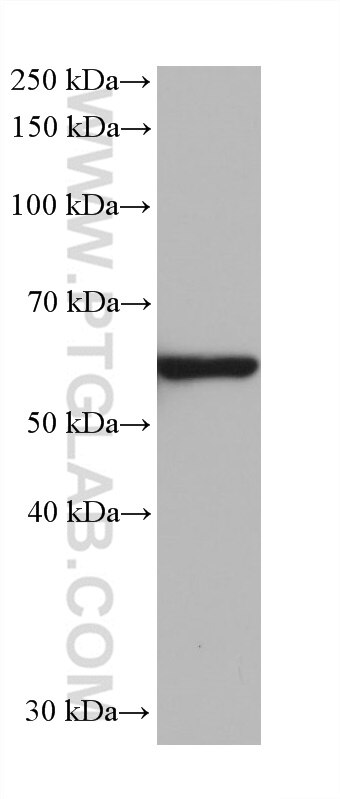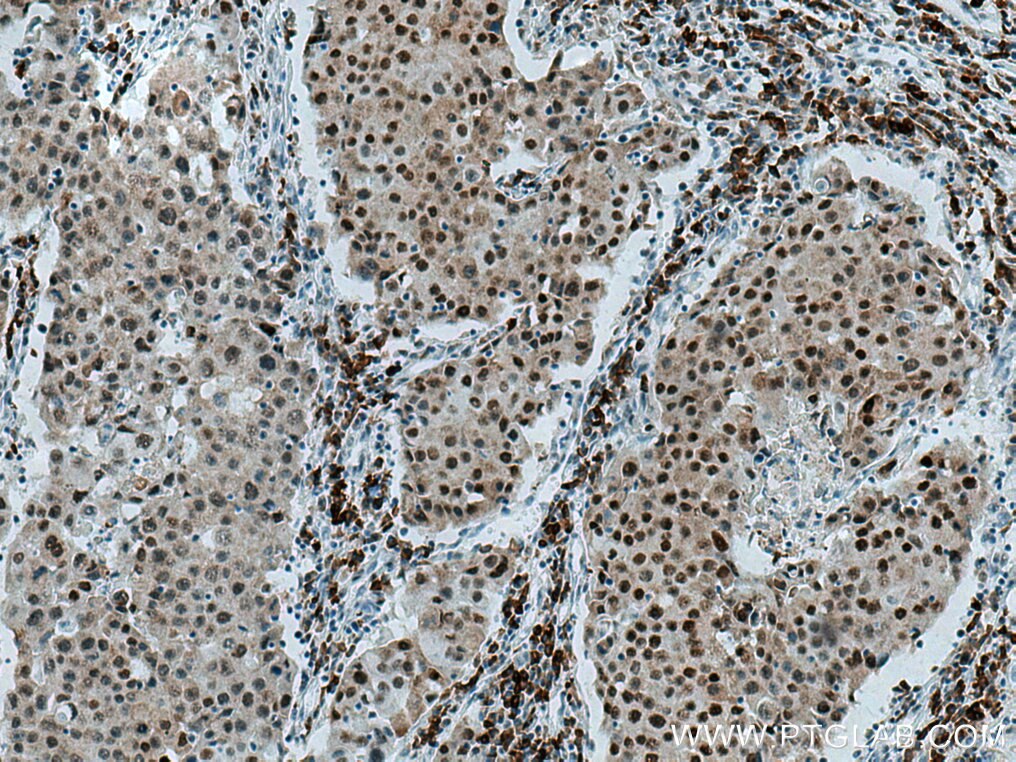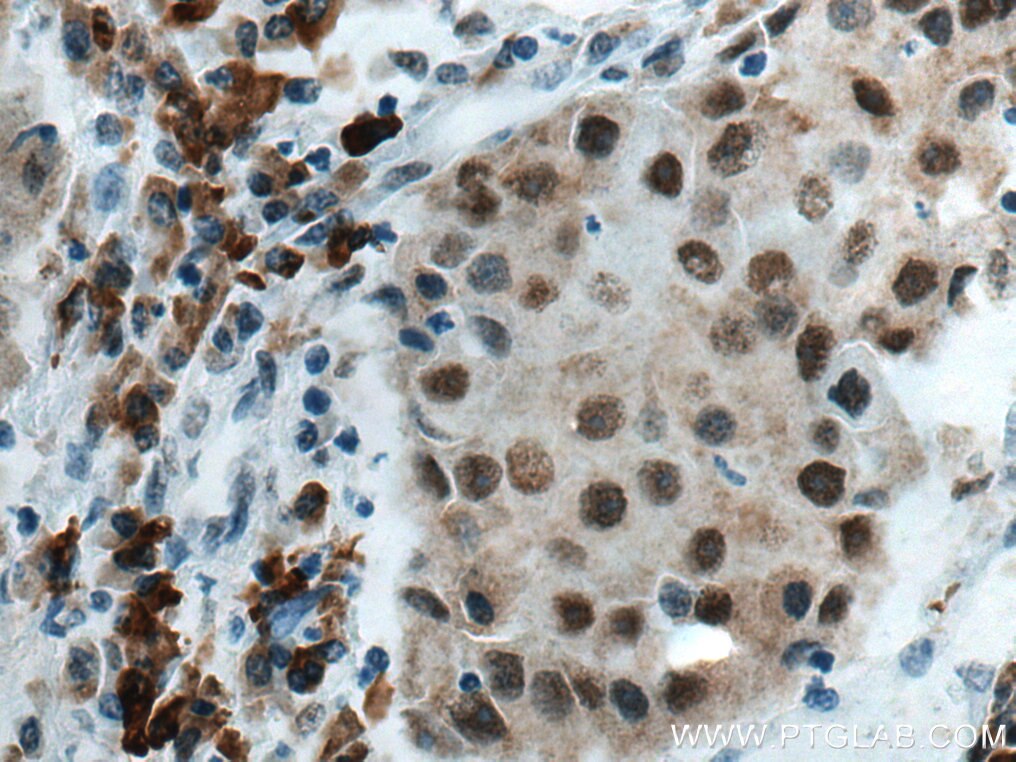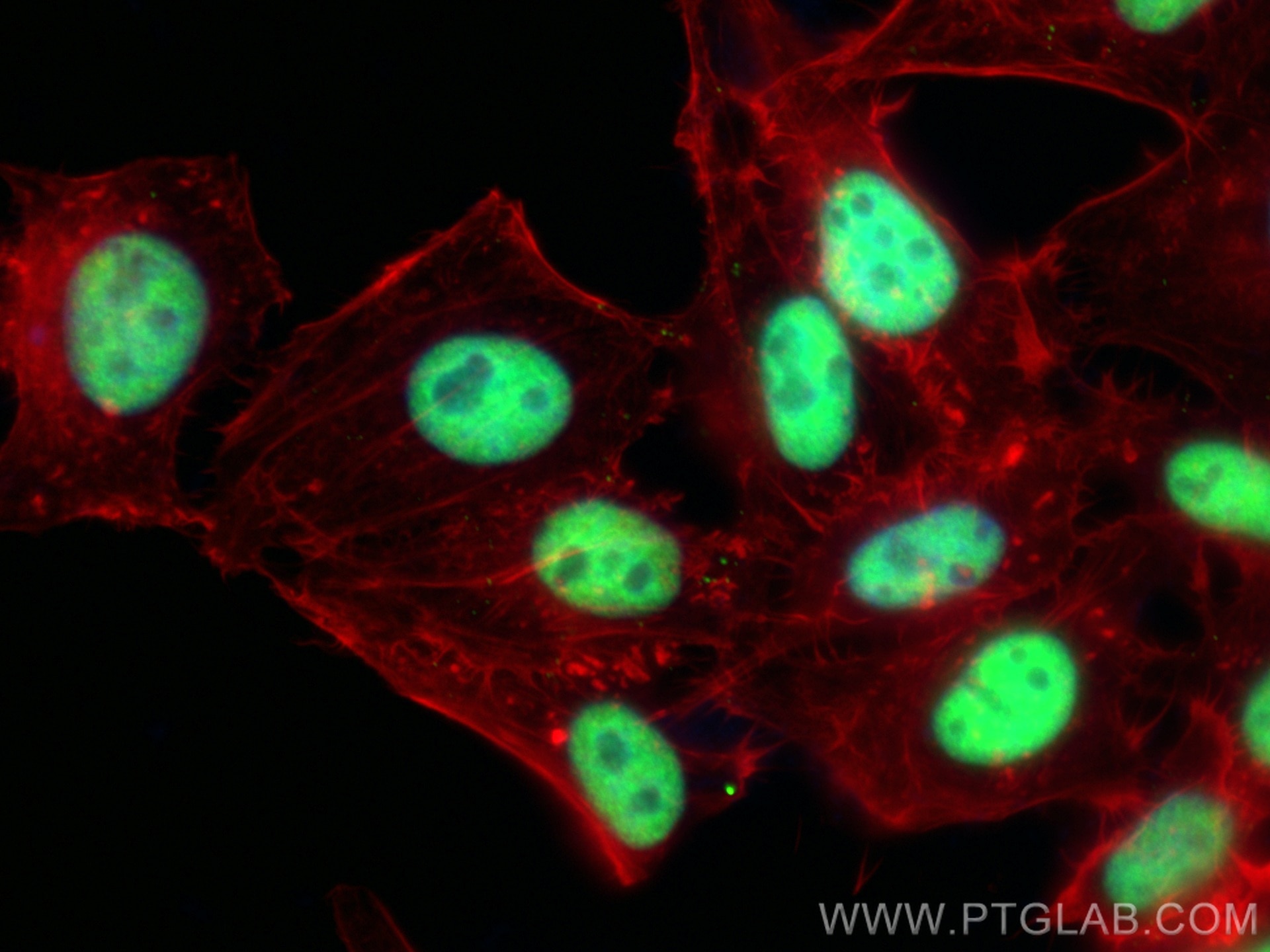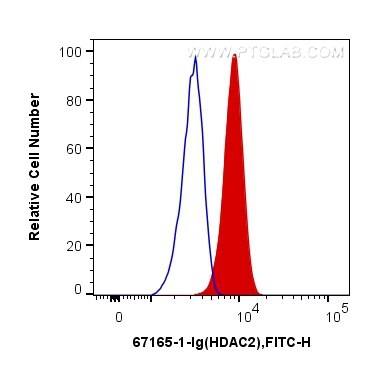Tested Applications
| Positive WB detected in | U2OS cells, 4T1 cells, MCF-7 cells, HeLa cells, HEK-293 cells, Jurkat cells, K-562 cells, HSC-T6 cells, NIH/3T3 cells |
| Positive IHC detected in | human breast cancer tissue Note: suggested antigen retrieval with TE buffer pH 9.0; (*) Alternatively, antigen retrieval may be performed with citrate buffer pH 6.0 |
| Positive IF/ICC detected in | HepG2 cells |
| Positive FC (Intra) detected in | HepG2 cells |
| Positive FC detected in | HepG2 cells |
Recommended dilution
| Application | Dilution |
|---|---|
| Western Blot (WB) | WB : 1:5000-1:50000 |
| Immunohistochemistry (IHC) | IHC : 1:500-1:2000 |
| Immunofluorescence (IF)/ICC | IF/ICC : 1:400-1:1600 |
| Flow Cytometry (FC) (INTRA) | FC (INTRA) : 0.40 ug per 10^6 cells in a 100 µl suspension |
| Flow Cytometry (FC) | FC : 0.40 ug per 10^6 cells in a 100 µl suspension |
| It is recommended that this reagent should be titrated in each testing system to obtain optimal results. | |
| Sample-dependent, Check data in validation data gallery. | |
Published Applications
| KD/KO | See 2 publications below |
| WB | See 4 publications below |
| IF | See 1 publications below |
| IP | See 1 publications below |
| CoIP | See 2 publications below |
Product Information
67165-1-Ig targets HDAC2 in WB, IHC, IF/ICC, FC (Intra), IP, CoIP, ELISA applications and shows reactivity with Human, mouse, rat samples.
| Tested Reactivity | Human, mouse, rat |
| Cited Reactivity | human, rat |
| Host / Isotype | Mouse / IgG2b |
| Class | Monoclonal |
| Type | Antibody |
| Immunogen | HDAC2 fusion protein Ag21288 Predict reactive species |
| Full Name | histone deacetylase 2 |
| Calculated Molecular Weight | 458 aa, 52 kDa; 488 aa,55 kDa |
| Observed Molecular Weight | 55 kDa |
| GenBank Accession Number | BC031055 |
| Gene Symbol | HDAC2 |
| Gene ID (NCBI) | 3066 |
| RRID | AB_2882461 |
| Conjugate | Unconjugated |
| Form | Liquid |
| Purification Method | Protein A purification |
| UNIPROT ID | Q92769 |
| Storage Buffer | PBS with 0.02% sodium azide and 50% glycerol, pH 7.3. |
| Storage Conditions | Store at -20°C. Stable for one year after shipment. Aliquoting is unnecessary for -20oC storage. 20ul sizes contain 0.1% BSA. |
Background Information
Histone deacetylases(HDAC) are a class of enzymes that remove the acetyl groups from the lysine residues leading to the formation of a condensed and transcriptionally silenced chromatin.Histone deacetylases act via the formation of large multiprotein complexes, and are responsible for the deacetylation of lysine residues at the N-terminal regions of core histones (H2A, H2B, H3 and H4). At least 4 classes of HDAC were identified. As a class I HDAC, HDAC2 was primarily found in the nucleus. HDAC2 forms transcriptional repressor complexes by associating with many different proteins, including YY1, a mammalian zinc-finger transcription factor. Thus, it plays an important role in transcriptional regulation, cell cycle progression and developmental events. This antibody is raised against residues near the C terminus of human HDAC2.
Protocols
| Product Specific Protocols | |
|---|---|
| WB protocol for HDAC2 antibody 67165-1-Ig | Download protocol |
| IHC protocol for HDAC2 antibody 67165-1-Ig | Download protocol |
| IF protocol for HDAC2 antibody 67165-1-Ig | Download protocol |
| FC protocol for HDAC2 antibody 67165-1-Ig | Download protocol |
| Standard Protocols | |
|---|---|
| Click here to view our Standard Protocols |
Publications
| Species | Application | Title |
|---|---|---|
iScience Modification of lysine-260 2-hydroxyisobutyrylation destabilizes ALDH1A1 expression to regulate bladder cancer progression
| ||
Molecules Anti-Colorectal Cancer Activity of Solasonin from Solanum nigrum L. via Histone Deacetylases-Mediated p53 Acetylation Pathway | ||
Toxicol Appl Pharmacol Advanced oxidation protein products upregulate ABCB1 expression and activity via HDAC2-Foxo3α-mediated signaling in vitro and in vivo.
| ||
Theranostics CRISPR screening reveals ZNF217 as a vulnerability in high-risk B-cell acute lymphoblastic leukemia |
Reviews
The reviews below have been submitted by verified Proteintech customers who received an incentive for providing their feedback.
FH Xinda (Verified Customer) (02-24-2025) | human iPSC derived NPC cell lysates were used as input. Co-immunoprecipitation was performed against a protein of interest. On the graph, one can see that the beads coupled with control antibody did not pull out HDAC2, whereas the protein of interest pulled out HDAC2. The groups are not labeled (because our results are not published), but in triplicate.
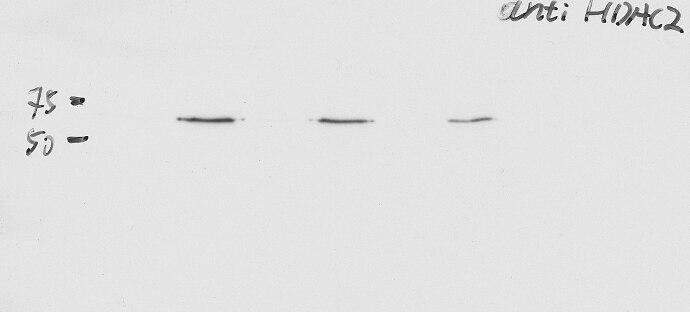 |
FH Xiaoyu (Verified Customer) (06-28-2023) | Good for wb
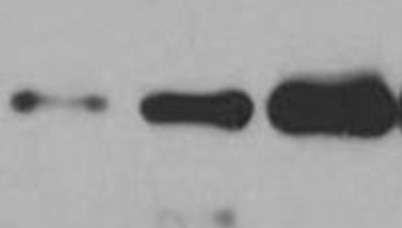 |
